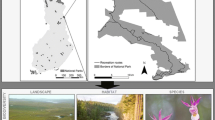Nepal's spectacular parks and reserves have attracted dramatically increasing numbers of foreign visitors. It might be expected that these protected areas would be nurtured as valuable and irreplaceable economic assets. However they are becoming seriously degraded and the financial resources provided for their management have been inadequate. This paper explores why — starting with the hypothesis that so little of the economic value of protected area tourism in Nepal is captured through fees and other charges assessed on foreign visitors that the protected areas are perceived as being of inconsequential value. It is conservatively estimated that $27 million of tourists' total expenditure in Nepal were attributable to the protected area network in 1988, when the costs of managing the parks were less than $5 million but direct fees colleeted from tourists visiting the protected areas amounted to less than $1 million. These figures suggest the parks are a good investment. But it could also be argued that the costs of park management were more than five times the revenues collected by the government from park tourists. Policy measures are identified which could help Nepal increase the economic as well as environmental benefits from nature tourism.
Case studies of Nepal's most-visited protected areas emphasize that the lack of funds for protected area management is not the only constraint on effective management. Some important economic and institutional interests have yet to be effectively reconciled with conservation in the protected areas. Most problematic are local people's economic aspirations and the operating practices of the principal government agencies involved — the Department of National Parks and Wildlife Conservation and the Ministry of Tourism. Fortunately there have recently been some encouraging signs of change within both of these agencies.
Similar content being viewed by others
References
Banskota, M., Sharma, P., Sharma, S., Bhatta, B. and Tenzing, T. (1990)Economic policies for sustainable development in Nepal. Kathmandu: International Centre for Integrated Mountain Development (ICIMOD).
Brandon, K. and Wells, M. (1992) Planning for people and parks: design dilemmas.World Devel. 20, 557–70.
Bunting, B.W., Sherpa, M.N. and Wright, R.M. (1991) Annapurna Conservation Area: Nepal's new approach to protected area management. InResident populations and national parks: Social dilemmas and strategies in international conservation (P.C., West and S.R., Brechin, eds) pp. 160–72. Tucson: University of Arizona Press.
Dixon, J.A. and Sherman, P.B. (1990)Economics of protected areas: A new look at benefits and costs. Washington, DC: Island Press.
ERL (1989)Natural resource management for sustainable development: A study of feasible policies, institutions and investment activities in Nepal with special emphasis on the hills. Report for ODA/World Bank. London: Environmental Resources Limited.
Gurung, H. (1990) Environmental management of mountain tourism in Nepal. Paper presented at the ESCAP Symposium on Tourism Promotion in the Asia Region, Hangzhou, China.
Healy, R.G. (1992) The role of tourism in sustainable development. Unpublished manuscript. Duke University.
HMGN/IUCN (1988)Building on Success: the National Conservation Strategy for Nepal. Kathmandu: IUCN.
Lehmkuhl, J.F., Upreti, R.K. and Sharma, U.R. (1988) National parks and local development: Grasses and people in Royal Chitwan National Park, Nepal.Environ. Conserv. 15, 143–8.
Lindberg, K. (1991)Policies for Maximizing Nature Tourism's Ecological and Economic Benefits. Washington, DC: World Resources Institute.
McNeely, J.A. (1988)Economics and Biodiversity: Developing and Using Economic Incentives to Conserve Biological Resources, Gland: IUCN.
Ministry of Tourism (1989)Nepal Tourism Statistics 1989. Ministry of Tourism: Kathmandu.
Ministry of Forests and Soil Conservation (1988) Plan for the conservation of ecosystems and genetic resources. InForestry sector master plan (Ministry of Forests and Soil Conservation). Kathmandu.
Mishra, H.R. (1984) A delicate balance: tigers, rhinoceros, tourists and park management vs. the needs of local people in Royal Chitwan National Park, Nepal. InNational Parks, Conservation and Development: The Role of Protected Areas in Sustaining Society (J., McNeely and K., Miller, eds) pp. 197–205. Washington, DC: Smithsonian Institution Press.
Nepal Rastra Bank (1989)Income and Employment Generation from Tourism in Nepal. Kathmandu: Nepal Rastra Bank.
RGON (1992)National report to the United Nations Conference on Environment and Development: Nepal. Kathmandu: Royal Government of Nepal.
Rana, D.S., ed. (1990)Annapurna Conservation Area Project: Three Year Retrospective Progress Report. Kathmandu: King Mahendra Trust for Nature Conservation.
Sharma, U. (1990) An overview of park-people interactions in Royal Chitwan National Park, Nepal.Lands. Urban Plan. 19, 133–44.
Sherpa, M.N., Coburn, B. and Gurung, C.P. (1986)Annapurna Conservation Area, Nepal: Operational plan. Kathmandu: King Mahendra Trust for Nature Conservation.
Stevens, S.F. and Sherpa, M.N. (1992) Tourism impacts and protected area management in highland Nepal: lessons from Sagarmatha National Park and Annapurna Conservation Area. Paper presented at the World Parks Congress, Caracas, February 1992.
Tobias, D. and Mendelsohn, R. (1991) Valuing ecotourism in a tropical rain-forest reserve.Ambio 20, 91–3.
Touche Ross, in association with ERL, University of Surrey, New Era and METCON Consultants (1990)Nepal Tourism Development Programme (several volumes and appendices). Kathmandu: Asian Development Bank and Ministry of Tourism.
Wells, M. (1992) Biodiversity conservation, affluence and poverty: mismatched costs and benefits and efforts to remedy them.Ambio 21, 237–43.
Wells, M. and Brandon, K. (1992)People and parks: linking protected area management with local communities. Washington, DC: World Bank.
Wells, M. and Brandon, K. (1993) The principles and practice of buffer zones and local participation in biodiversity conservation.Ambio 22, 157–62.
Author information
Authors and Affiliations
Rights and permissions
About this article
Cite this article
Wells, M.P. Neglect of biological riches: the economics of nature tourism in Nepal. Biodivers Conserv 2, 445–464 (1993). https://doi.org/10.1007/BF00114046
Received:
Accepted:
Issue Date:
DOI: https://doi.org/10.1007/BF00114046




